Monthly Archives: May 2024
Top 10 All-Time European-Born NHL Forwards
Bruins’ inability to win important home playoff games is perplexing
3 Biggest Trades in Red Wings History
NHL Rumors: Lightning, Panthers, Jets, Islanders
Predicting Islanders’ 2024 Offseason Contract Extensions
Report: Brind’Amour unsure about future with Hurricanes
Rod Brind'Amour has enjoyed immense success as head coach of the Carolina Hurricanes, but as his team prepares for its Round 2 matchup against the New York Rangers, questions swirl around his future with the franchise.
A contract extension for Brind'Amour, the 2021 Jack Adams Award winner, has yet to be finalized as he completes the final year of his existing deal.
"Confidants say he has become unsure about his future in Carolina, according to sources familiar with those conversations," reports The News & Observer's Luke DeCock.
An extension once seemed close, but it's believed the offer has been pulled, reports TSN's Darren Dreger, adding that Brind'Amour wants to stay in Carolina.
However, team owner Tom Dundon said an extension is nearing the finish line.
"I think it's all but done," Dundon told DeCock. "(General manager) Don (Waddell) and him are working on it. I don't think there's anything there. We're in the playoffs, and they haven't focused on it. They're doing it together. I said OK to almost everything they've asked me for. They're just getting through the last little stuff."
Waddell declined to comment to DeCock, while Brind'Amour told the reporter via text message that it's "in Tom's hands."
Waddell later added that he's "very confident" a deal will get done. "Rod wants to be a Hurricane for life," the GM said, per Chip Alexander of The News & Observer. "There will be a solution here quickly, I feel."
Brind'Amour would be highly sought-after if he decided to test the open market this offseason. He's led the Hurricanes to at least one playoff series victory in each of his six seasons at the helm, making the conference finals in 2019 and 2023.
The 53-year-old has spent the last 24 seasons with the Hurricanes organization. He played in Carolina for 10 years from 2000-10, captaining the franchise to its lone Stanley Cup in 2006. Immediately after retiring, he became the director of player development before moving to an assistant coach role in 2011 and taking the head coach job in 2018.
There are currently seven NHL teams without a permanent head coach: the St. Louis Blues, Ottawa Senators, Los Angeles Kings, New Jersey Devils, San Jose Sharks, and Seattle Kraken. Brind'Amour has ties of varying degrees to three of those clubs. He notably started his playing career with the Blues, was born in Ottawa, and was teammates and colleagues with Kraken GM Ron Francis.
Whenever Carolina's offseason gets underway, it stands to be busy. The team has several notable pending unrestricted free agents, including Teuvo Teravainen, Jake Guentzel, Jordan Martinook, Brady Skjei, and Brett Pesce.
Copyright © 2024 Score Media Ventures Inc. All rights reserved. Certain content reproduced under license.
Domi and Woll Lead the Way as Maple Leafs Avoid Elimination
Leafs still alive: 6 battles that will decide Game 6
Matthew Knies scored 2:26 into overtime on Tuesday to keep the Toronto Maple Leafs' season alive. The Boston Bruins lead the first-round playoff series 3-2. Here are six battles that'll determine the outcome of Game 6 on Thursday in Toronto.
Power play vs. power play
One team has spent 32:40 on the power play and scored a grand total of one goal. The other's been on the man advantage for 21:40 and scored six times.
There's the series. Otherwise, the Bruins and Leafs have played to a near draw; the cumulative score at even strength is 9-8 Boston.
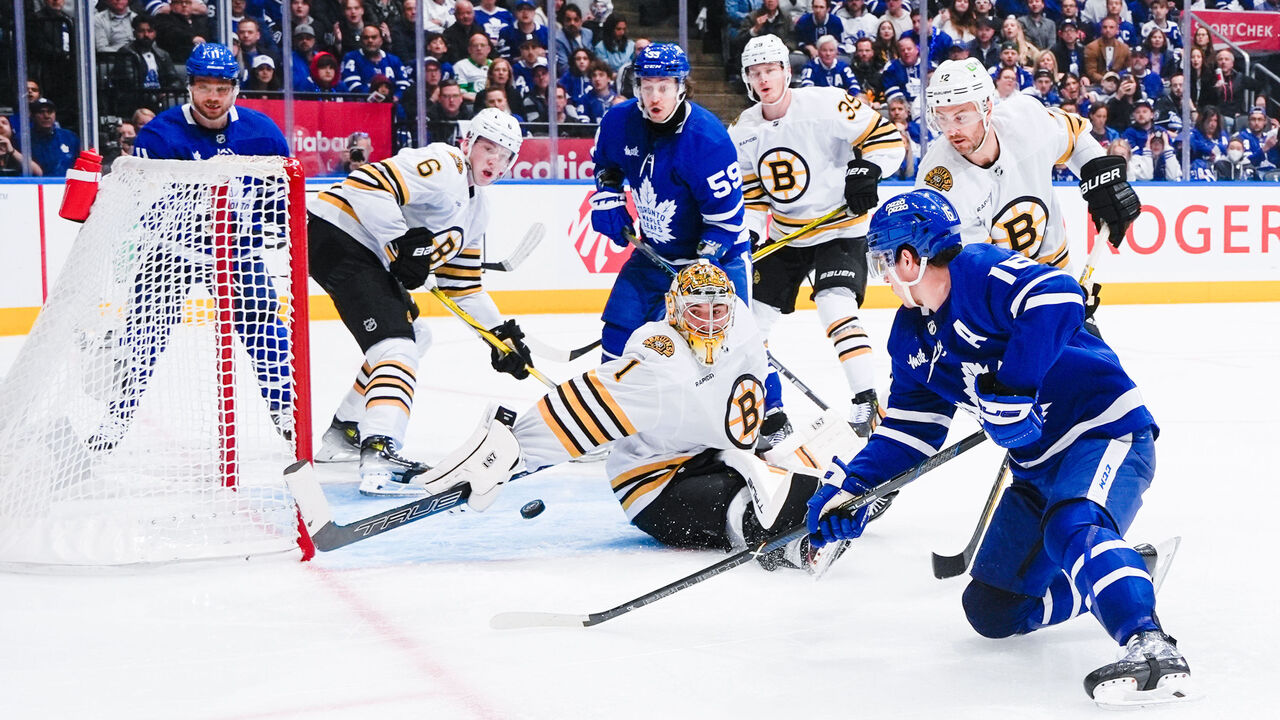
Toronto's power play, which finished seventh in the NHL in efficiency during the regular season, has recorded a playoff-high 64 shot attempts over 17 opportunities. Its lone goal: a John Tavares turnaround slap shot in Game 2.
Auston Matthews missed Game 4's third period and the entirety of Game 5 due to illness and/or injury. His uncertain status looms large in general, and especially with regards to the power play and its potency.
The Leafs rolled out a top unit of Tavares, Morgan Rielly, William Nylander, Mitch Marner, and Max Domi in Boston on Tuesday. Nylander's an excellent shooting option. After that, things get dicey. If Matthews remains unavailable, coach Sheldon Keefe should take Domi out for Nick Robertson and his rocket of a shot. Domi's earned the PP1 spot, but his skill set is redundant on a Marner-led unit. The Leafs need a legitimate triggerman besides Nylander.
McCabe-Benoit vs. Pastrnak line
Matthews dominated Game 2, setting up the first two Toronto goals before scoring the decider in a 3-2 victory. We're still waiting for Matthews' counterpart, David Pastrnak, to author a signature performance of his own.
Pastrnak scored 47 goals in the regular season - good for seventh in the NHL and 18 more than any other Bruin. He collected 63 assists - tied for 10th in the league and 25 clear of his teammates. He racked up 382 shots on goal - second and 175 clear.
In other words, Boston's offense flows through the Czech winger. Pastrnak's contributed two five-on-five goals, one five-on-five assist, and one five-on-six assist in five playoff games - not terrible but also not good enough. Worse, he's only been credited with six high-danger shot attempts all series.
Pastrnak's line with center Pavel Zacha and Jake DeBrusk or Danton Heinen has almost exclusively faced the Tavares line and the Jake McCabe-Simon Benoit pairing. Keefe owns last change in Game 6 and should chase that matchup again; McCabe was particularly disruptive and controlling in Tuesday's win.
Uptempo game vs. grinding game
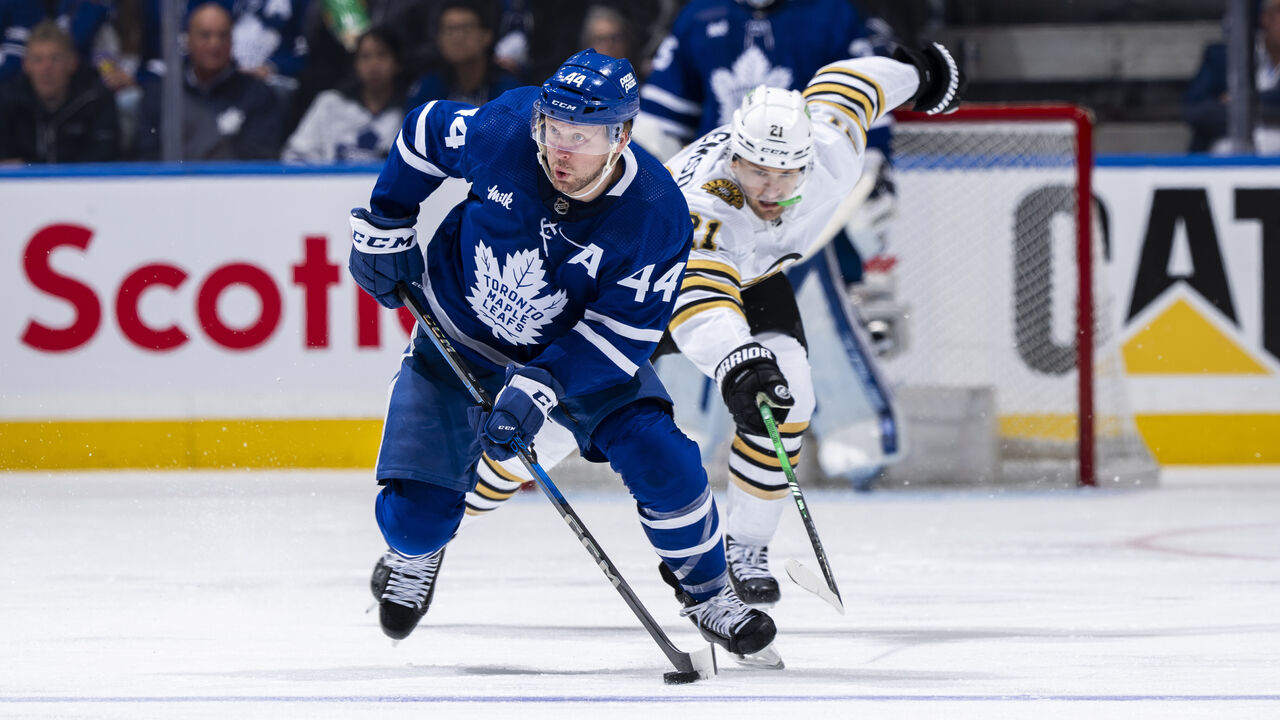
Game 5 was different. The action was free-flowing and the teams traded scoring chances. It was a brand of hockey that accentuated Toronto's strengths.
The Leafs' first four games, on the other hand, were marred by poor puck movement, which led to lackluster zone exits and entries, which produced a virtually nonexistent rush game. Coupled with limited time in the offensive zone, that put a ceiling on Toronto's ability to wreak havoc.
While all of those components vastly improved in Game 5, Boston's forecheck took a back seat. Will the Bruins surge again or did the Leafs unlock something? It was no coincidence that the improvements came alongside a better showing from Nylander, who made his series debut in Game 4 and thrives on the rush. Keep an eye on him.
Bruins vs. first period
This battle is connected to the one above: The Bruins got manhandled in Game 5's first period. They generated just seven shot attempts (two on goal) to Toronto's 31 (11 on goal) and were lucky to escape with a 1-1 score.
That said, Boston's up in the series because the team has otherwise taken charge.
Coach Jim Montgomery tinkered too much with a good thing when he scratched forward Johnny Beecher and defenseman Kevin Shattenkirk in Game 5. Replacements Justin Brazeau and Matt Grzelcyk weren't the answer, so a reversal is in order. Beecher's been extremely effective on the fourth line.
Marchand vs. Domi

With 118 saves on 124 shots, Bruins goalie Jeremy Swayman has been the series MVP. Joseph Woll's four periods in the Leafs' net have been stellar too.
What's more interesting than the goalie duel, though, is how Brad Marchand and Domi close out the best-of-seven set. Both are built to thrive in the playoffs and have enjoyed strong series, yet both left something to be desired in Game 5.
Marchand came into Tuesday with three goals (including two game-winners), five assists (including four primary helpers), and zero penalty minutes. He left with the same point total, two minors for roughing, and limited footage to add to the highlight reel. It was arguably the captain's worst game of the series.
Domi, meanwhile, went 10-for-10 in the faceoff circle in the first period, with one of his wins leading to the opening goal. He was dangerous most of the night; however, he botched a pair of two-on-one breaks. Anyone watching could tell he was thinking about passing the puck, and then he did - both times. The irony is that Domi actually has a decent shot. Use it!
Both teams vs. external pressure
The fan base in Toronto is sick of this core losing in the playoffs. Game 5 helped turn the dial down on the noise, but it won't go away - nor should it. There's immense pressure on the Leafs to force a Game 7 on Saturday.
Boston coughed up a 3-1 lead to the Florida Panthers in last year's first round after setting a record for most points in a regular season. This is a different season and different opponent. Still, there's no denying the elephant in the room.
Which team can dig in, focus on the task at hand, and ultimately execute?
On the individual level, while Marner has somewhat redeemed himself as the series has progressed, the $11-million man remains public enemy No. 1 locally. Any goodwill created in Game 5 will vanish if the should-be difference-maker fails to produce in Game 6.
John Matisz is theScore's senior NHL writer. Follow John on Twitter (@MatiszJohn) or contact him via email (john.matisz@thescore.com).
Copyright © 2024 Score Media Ventures Inc. All rights reserved. Certain content reproduced under license.
Coast to coast: Inside hockey’s 50/50 phenomenon
Not long into the 1994 NHL lockout, the Glace Bay Minor Hockey Association realized it had a financial puzzle of its own to solve.
While big-league owners and players negotiated a potential salary cap to limit the soaring cost of contracts, the small, volunteer-led minor hockey association in Nova Scotia instantly lost its main source of fundraising: NHL hockey pools. The NHL might've stalled, but minor hockey in Nova Scotia was as strong as ever, and its costs were soaring, too. It needed another funding avenue.
"The fundraiser was to combat the high cost of minor hockey for players and families in an economically depressed area," said James Edwards, current president of the Glace Bay Minor Hockey Association. "Don't forget, we're talking about the mid-90s in Cape Breton. The area was built on coal mines, steel, and fishing. Those three industries were on the way out. Unemployment was high and money was scarce."
So Glace Bay tried something new: a 50/50 raffle, another fundraising staple that's embedded in hockey culture. Tickets were priced at $1, and parents dutifully volunteered to hawk them on delivery routes, in work yards, and at offices around the community.
"We had parents who traveled throughout the municipality, whether they were delivering bread or gas - we had the distribution network," Edwards said. "It caught on right away, and then it started to grow. Then with that, it offered immediate benefits. All of a sudden, we could eliminate the registration costs. Then the cost of the ice. Then we could help with the equipment."
In the three decades since, the raffle's totals have ballooned to rival professional sports teams. In December 2023, the association's 50/50 jackpot reached $213,681.50 - which means it sold over 400,000 $1 tickets in the town of 16,915 people. What started as a temporary solution to weather a three-month NHL lockout became a permanent fixture.
"We're a multi-million-dollar organization," Edwards said. "You can just imagine how popular this ticket is. People have them at work, in convenience stores, service stations, taverns, pizza joints. They're everywhere. Merchants call us asking for the tickets because it brings people into their shop."
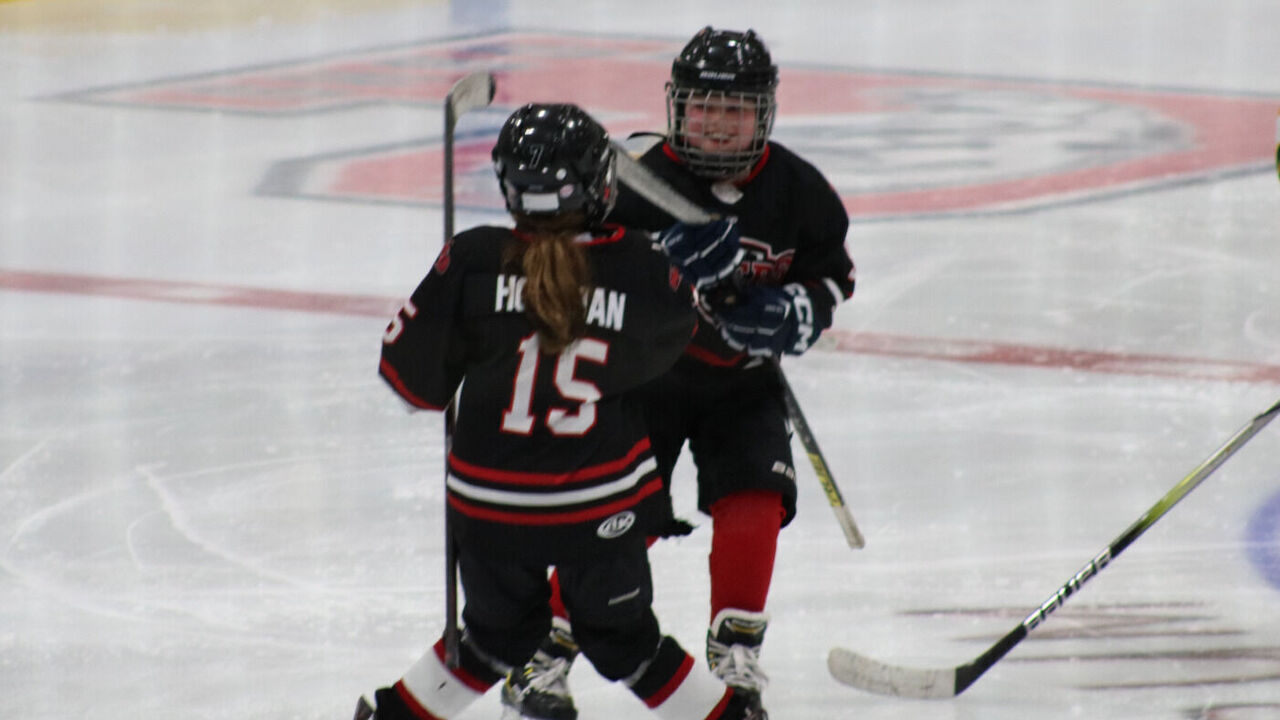
The association has used the 50/50 proceeds to pay for refs, fund development camps for each hockey position, start a sledge hockey league, create a bursary that offsets postsecondary education costs, pay for cross-training, and create skating clubs for children as young as 2. It recently started a program for international students to try hockey for the first time.
"The problem with minor hockey development right now is the cost. But not in Glace Bay," Edwards said.
It's a Canadian thing
The Glace Bay Minor Hockey Association might have the most striking results, but successful 50/50s are hardly limited to Nova Scotia. Across the country, but particularly in Western Canada, 50/50 draws are a standard part of the experience of attending a pro sporting event.
"Being born and raised in Edmonton, 50/50s are interwoven into our DNA," said Corey Smith, chairman of the Edmonton Oilers Community Foundation. Before the pandemic, when the Oilers took their 50/50 digital, draws traditionally occurred on-site during the third period of hockey games. "From my earliest memories of going to Oilers games with my dad, the big thing was always that we had to buy a 50/50 ticket," he said.
The Oilers' recent 50/50 totals have been record-setting. "The summer of 2020 was the first time people had the opportunity to buy tickets online, and our topline revenue went to $90 million," Smith said. The Oilers bill their 50/50 as "the largest game-day raffle in professional sports" and now run draws that build across multiple home and away games to add up to super jackpots. Their Round 1 main raffle jackpot is already over $1 million, with at least one more game to go in the series. All those tickets are purchased within Alberta, per the Alberta Gaming and Liquor Commission guidelines on lotteries.
The Winnipeg Jets have also adopted the cumulative 50/50 model; their Round 1 jackpot totaled $930,540 with a main prize of more than $820,000 and various early-bid draws before they were eliminated by the Avalanche in Game 5.
"The 50/50 has become part of the game experience in Western Canada," said Dwayne Green, the executive director of the Jets' True North Youth Foundation, which is funded by their 50/50. "People would always stay in the building to hear the 50/50 number, traditionally, before it was all done online. And maybe certain communities would use it to keep more people in the building if it was a lopsided score. We still announce it at our games because lots of people do stay."
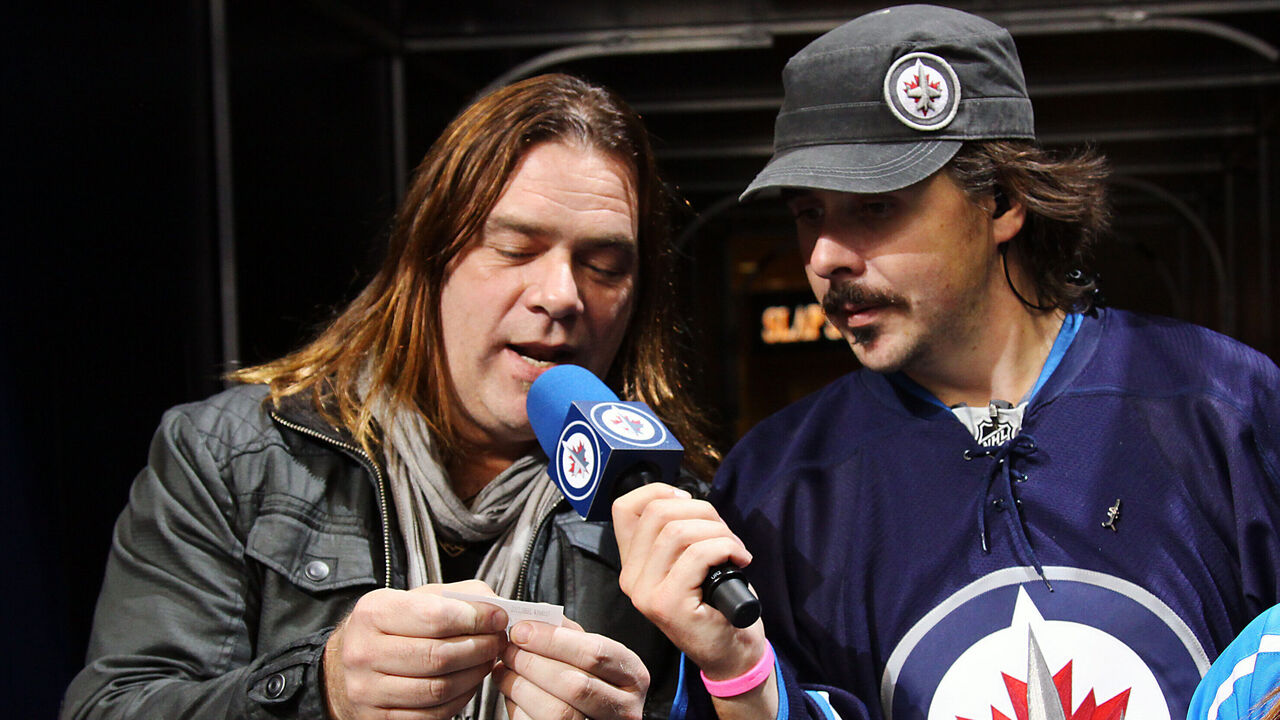
Several NHL clubs have adopted the 50/50 draw, but the Western Canadian teams are outliers in size and scope. The Canucks, who opted for per-game 50/50 draws in Round 1, totaled more than $1.2 million in prizes in their first five games against the Predators. For comparison, the 50/50 pots for the Golden Knights' first two home games in Round 1 were $76,000 and $63,000. Regular-season totals underscore the difference even more drastically. The last time the Ducks and Kings met in the 2024 regular season - a Ducks home game in one of North America's most populated regions - the 50/50 sales totaled just $15,010, with the winner taking home $7,505.
Even in Canada, results in the West stand out. The Toronto Maple Leafs gave away just $122,775 in cash 50/50 prizes so far in Round 1. Single jackpots for the Montreal Canadiens and Ottawa Senators rarely broke six digits this season. The Toronto Blue Jays are the only team in the East that has generated million-dollar jackpots; they run in-stadium and online sales for single draws spanning multiple games to benefit the Jays Care Foundation.
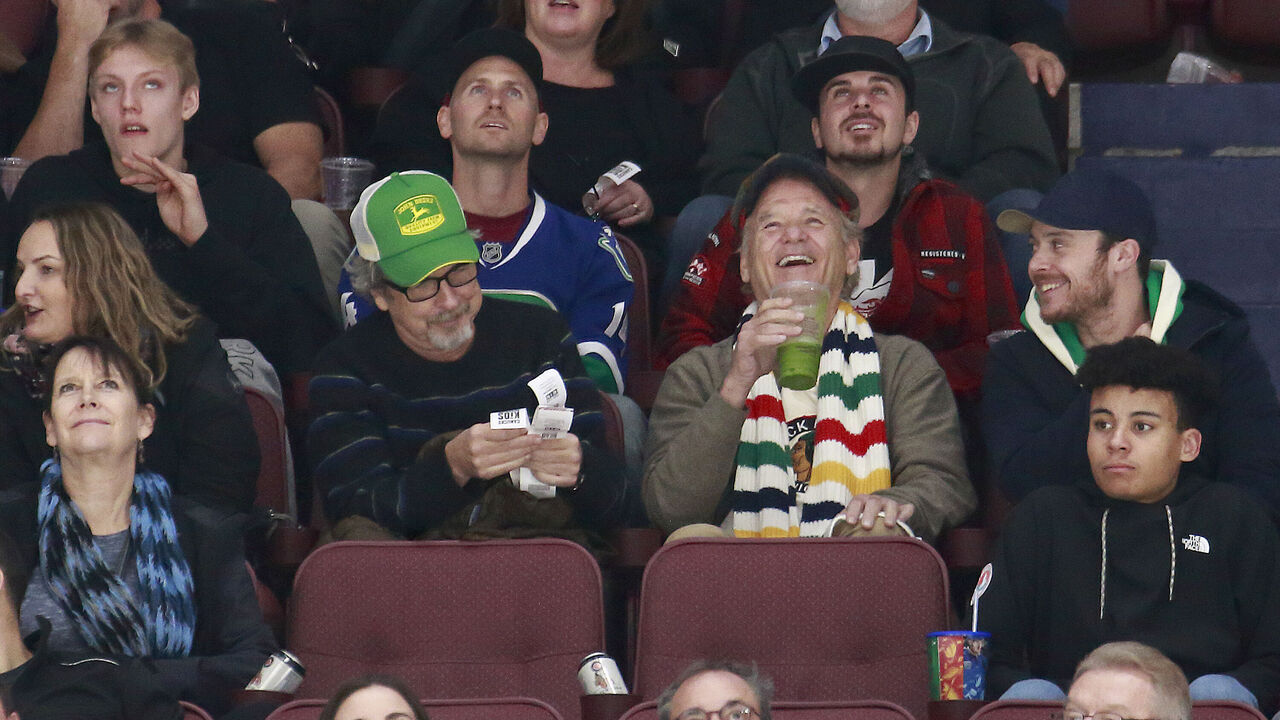
"I always find that, especially the prairie provinces, in Western Canada … they love to be able to be part of something that turns out to be good," Green said. "And the odds are also pretty good. There are not a lot of lotteries that have odds like there are in the 50/50s that go on at NHL games in Western Canada. And, whether you win or lose, you feel like you've helped."
Who do the funds help?
Tim Adams, who founded Free Play for Kids in Edmonton, echoes Green's suggestion that fans in Western Canada embrace 50/50s because they get a sense they're helping their communities.
"I can remember buying 50/50 tickets at games and knowing the list of charities that were on there and genuinely feeling good about the fact that I have a chance to win a million bucks and someone else has been helped for a good cause," said Adams, whose charity is a recipient of funding from the Oilers' 50/50.
"It's absolutely huge to have a partner like that, who has the ability to help with funding, especially when it's tight. … In the charitable space, most grants, you're lucky if they're a year. So we're constantly fighting and fighting and fighting. And we've had times where I'll go to the crew at the (Edmonton Oilers Community Foundation) and say, 'It's really tight this year and this funding has changed, and that one's changed. Can you help us?' And they've stepped in and helped, so it makes a big difference," he said.
Provincial gaming legislation in Canada mandates that funds raised from lotteries remain in province. National organizations, such as former NHLer Mark Kirton's ALS super fund, direct funds to activities within the province from which they were donated. The Oilers have set aside some 50/50 proceeds for Kirton's work, which he has used to work with neurologists based in Alberta.
"That's probably one of the reasons people are buying tickets, right?" said Kirton, who noted that being able to see who the money is benefiting and knowing it stays local are both part of what donors are looking for in today's charitable landscape.
But information on 50/50 proceeds might not be as clear as fans believe. For example, Charity Intelligence Canada, which monitors the financial transparency of registered Canadian nonprofits, gave the Oilers a C- for their public reporting. It noted that financial statements aren't posted online and have been redacted by the Canada Revenue Agency since 2015. It added that in 2022, after paying out prize money and licensing fees, the charity had just $14.5 million of the $74.1-million lottery revenue, representing only 20% of lottery revenues going to programs.
"It's an expensive program to run," Smith said. "Right out of the gate, half of every dollar that you raise goes out the door to the winner. That's a miserable cost of fundraising. And then you've got your Visa charges and your advertising charges.
"It's tough to use a traditional philanthropy world to measure our performance. When you think about the costs to raise $1, our costs are quite high, because at minimum, even if Visa said, 'We're not going to charge you a penny to sell these things,' our cost is at least 50 cents to $1."
Despite that, he's still a proponent of the 50/50 as a fundraising tool because people get excited about it and contribute. "I'm of the view that as long as the cost of every dollar raised is not greater than $1, and the difference is going back to the community, we should keep going."
The Glace Bay way
Glace Bay Minor Hockey Association might not have the reach of the pros, but what it lacks in geography and population, it's made up for with pure grit. The group has avoided fees that eat into the margins of its NHL counterparts by continuing to sell tickets in cash, and it has kept the cost of each ticket at $1 for 30 years. It now sells over 3 million tickets annually. Three police officers preside over counting funds and tickets every Sunday afternoon during the regular season.
"At Christmastime, there's close to half a million dollars on the table," Edwards said.

"Usually, the winner is local. And if someone wins $50,000, chances are, the entire amount of money that was generated in that week is going to be spent right here in the local area. Whether it's a car dealership or a restaurant or whatever, everybody's going to benefit," he said.
"Any kid who wants to play hockey in the community can," he added. "If it wasn't for the Glace Bay minor hockey 50/50 draw, there's a lot of kids who would not be participating in the game that Canada loves." Because of that, Edwards doesn't foresee the 50/50 in Glace Bay changing any time soon.
"The first rule of hockey is you don't tamper with a winning lineup."
Jolene Latimer is a features writer at theScore.
Copyright © 2024 Score Media Ventures Inc. All rights reserved. Certain content reproduced under license.
